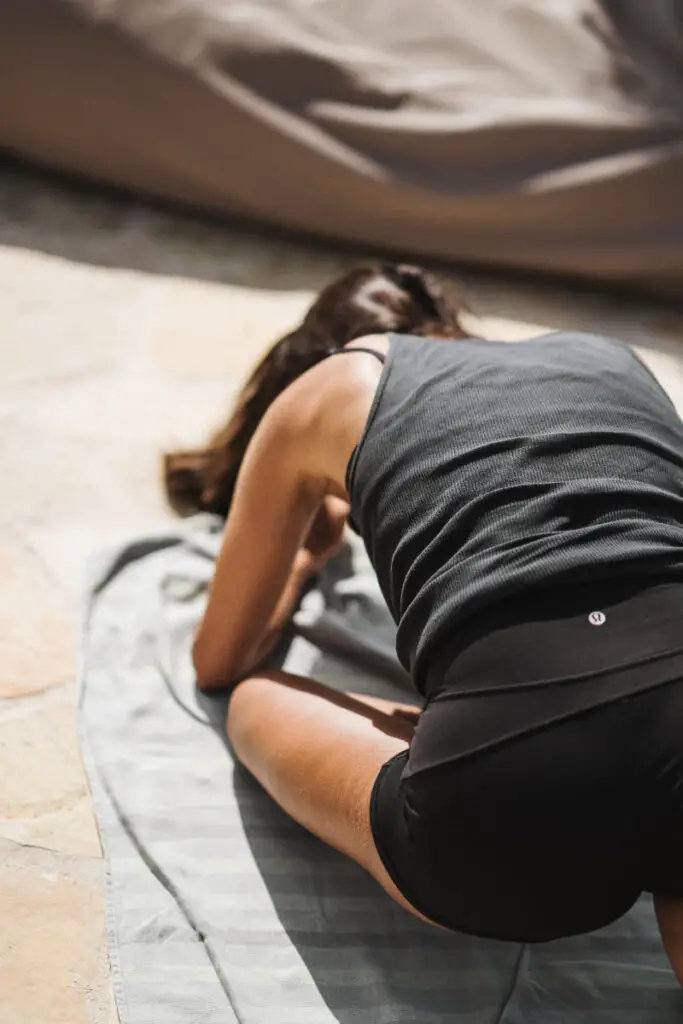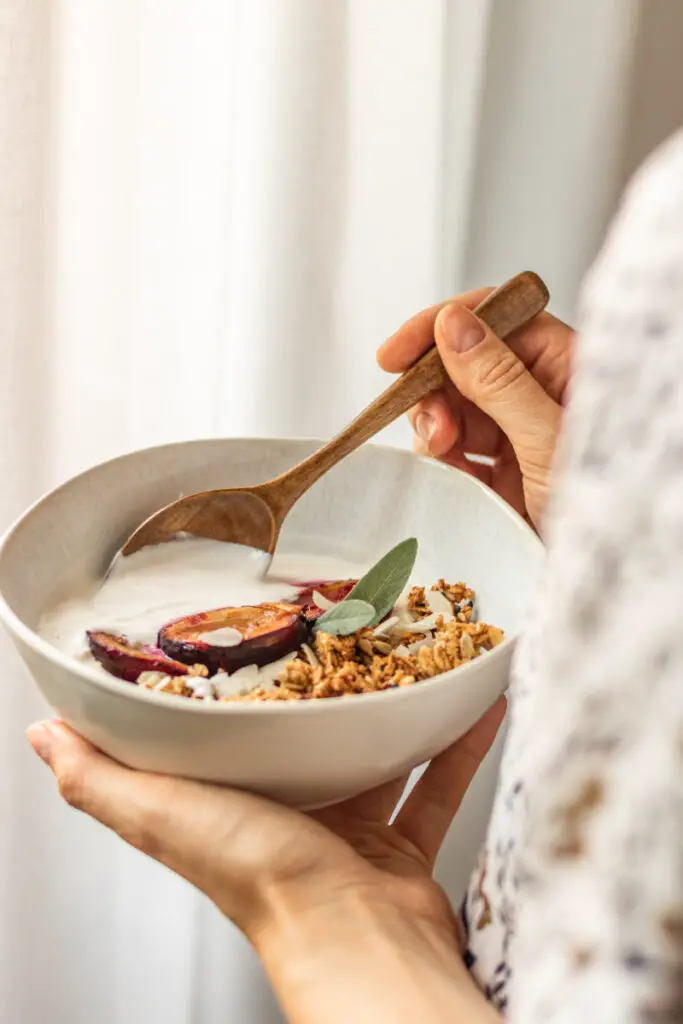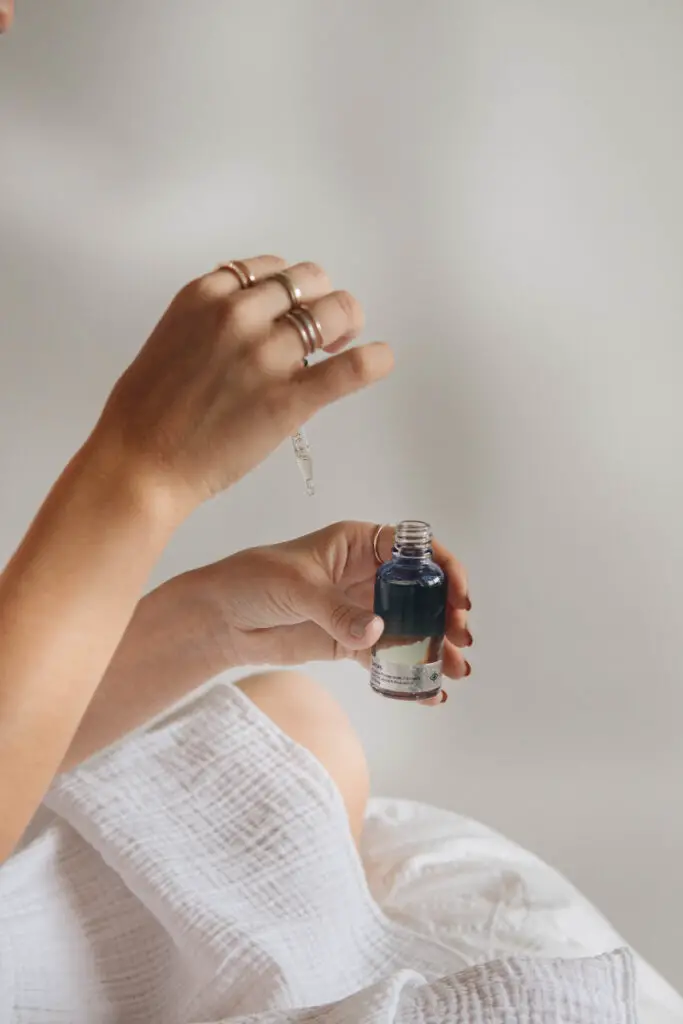In the world of blogging, health and wellness niches are considered among the most popular and profitable niches. With an increasing focus on self-care and a growing interest in living a healthier lifestyle, there is no doubt that these niches will continue to thrive.
However, it comes with several downsides and challenges. With so many bloggers already in these niches, standing out and finding success can be tough for beginner bloggers.
Also, because of the nature of the topic, Google requires bloggers to have a certain level of expertise and authority before they can rank high in search results.
Its E-E-A-T (Experience, Expertise, Authoritativeness, and Trustworthiness) algorithm prioritizes content from established websites and brands, meaning that it can be challenging for new bloggers to gain visibility and traffic.
In today’s blog post, I have compiled a list of 200+ health and wellness micro niches for beginner bloggers to help you get started on your blogging journey!

What Is Health and Wellness Niche?
First thing first, you might be wondering what exactly the health and wellness niche encompasses. Well, as the name suggests, it includes all topics related to health and wellness – from physical health, mental and emotional wellness to spiritual well-being.
This can include areas such as fitness, nutrition, self-care, meditation, mindfulness, personal development, alternative medicine, and much more.
WebMD, Healthline, and Mind Body Green are some popular websites that cover various aspects of the health and wellness niche, making it a vast and diverse topic to explore.
Smaller niche blogs such as The Fitnessista, Oh She Glows, and Bites of Wellness have also found success by focusing on specific areas within the health and wellness niche.
Even I myself have a health and wellness niche blog, Healthy Living Guide, where I cover topics such as healthy eating, self-care, and mental health. It’s a micro-niche blog, of course, and it’s what I recommend for you in this article!

Types of Health and Wellness Blog Posts
In a niche as broad as health and wellness, there are countless types of blog posts you can write. Here are just a few examples to get your creative juices flowing:
Informational posts
These are blog posts that provide valuable information and insights on various health and wellness topics. For example, “10 Benefits of Practicing Yoga Every Day” or “The Truth About Intermittent Fasting: Is It Right for You?”.
The pros of creating informational posts are that they can establish you as an expert in your niche and provide value to your readers. However, be sure to fact-check and cite sources to maintain credibility.
Personal stories
Sharing personal experience on a health or wellness journey can be incredibly powerful for both the blogger and the reader. These types of posts can include weight loss journeys, overcoming mental health struggles, or even just practicing self-care.
For example, “How I Overcame My Anxiety Through Meditation” or “My Journey to a Plant-Based Diet” can resonate with readers and create a strong connection.
The key to writing a personal health and wellness story is to be authentic and vulnerable. Your readers will appreciate your honesty and may even relate to your experiences.
Product reviews and recommendations
As a blogger, you have the opportunity to work with different brands and products in the health and wellness industry. You can create sponsored content or collaborate with companies to promote their products in exchange for a commission.
However, be mindful and only recommend products that you genuinely believe in and have personally tried. Your readers’ trust is crucial, and promoting low-quality or ineffective products can damage your reputation as an authority in the health and wellness niche.
Listicles
As the name suggests, these are articles in the form of lists. They can be on any topic related to health and wellness, such as “5 Healthy Breakfast Ideas for Busy Mornings” or “10 Self-Care Practices to Incorporate into Your Daily Routine”.
Listicles are popular because they are easy to read and provide quick, actionable tips for readers. They also have the potential to go viral on social media if shared by readers.
“How-To” guides
Teach your readers how to do something related to health and wellness. It could be how to meal plan, how to create a workout routine, or how to practice self-care.
Examples for this type of blog post include “How to Create a Self-Care Routine That Works for You” or “A Beginner’s Guide to Meal Planning for Weight Loss”.
These posts are valuable because they provide step-by-step instructions and can help readers achieve their health and wellness goals.
So, as you can see, health and wellness niches offer a lot of potential for bloggers, but of course, it comes quite great competition as well.

Who Qualifies to Be Health and Wellness Blogger
Although you don’t necessarily need to be a certified health or wellness expert to start a blog in this niche, having some knowledge and experience is a huge plus, giving you more credibility and authority.
However, even if you’re just starting your journey towards a healthier lifestyle, you can still share your experiences and tips along the way.
As long as you are transparent about your expertise level and continue to learn and grow, you can still establish yourself as a trustworthy health and wellness blogger.
A normal person with a passion for healthy living, healthy eating, or just taking care of oneself can become successful in the health and wellness niche.
Take me, for example. I am by no means a certified expert in any specific area of health and wellness. Still, my passion for living a healthy lifestyle and sharing my experiences has helped me build a growing health blog and can even monetize it.
Choose only what you are comfortable with
If you don’t have any certificate at all, start by sharing your personal experiences and learn along the way. As you continue to grow, consider taking courses or workshops to further improve your knowledge and expertise.
Also, make sure to do thorough research and fact-check before publishing any information on your blog. Your readers’ health should always be a top priority, and providing accurate and reliable information is crucial.
By choosing to focus on what you are knowledgeable and passionate about, you can create authentic and engaging content for your readers.
Niche down to build authority
In order to stand out and make a mark in this niche, it is essential to find your unique angle or micro niche. A micro-niche allows you to target a specific audience and create content that caters to their needs and interests.
For example, instead of writing about general health and wellness, you can focus on a specific group like new moms, busy professionals, teens, or seniors. This will not only help you establish yourself as an expert in that area but also attract a dedicated and engaged audience.

How to Monetize Your Health and Wellness Blog
Health and wellness niches are among the most profitable niche markets for bloggers. With a growing global interest in health and wellness, there are various ways to monetize your blog and turn it into a source of income.
The health industry offers a wide range of products and services, making it easier for bloggers to find opportunities to monetize their content.
But then, the less good news is that making money from your blog takes time and effort. It’s not a get-rich-quick scheme, and it requires consistent dedication and hard work. Here are some ways to monetize your health and wellness blog:
Affiliate Marketing
Affiliate marketing is a popular method for bloggers to earn passive income. It involves promoting products or services through special affiliate links on your blog. When someone makes a purchase through your link, you earn a commission.
In the health and wellness niche, you can partner with companies that offer health products, supplements, fitness equipment, self-care products, and more. Just make sure to disclose any affiliate partnerships in your posts to maintain transparency with your readers.
Sponsored Content
As mentioned earlier, you can collaborate with brands and companies to promote their products or services on your blog. This can include sponsored posts, social media shoutouts, giveaways, and more.
When working with sponsors, make sure to choose products or services that align with your values and that you genuinely believe in. Authenticity is key in maintaining your readers’ trust.
Create and Sell Digital Products
You can also create and sell digital products such as e-books, courses, meal plans, online courses, or workout programs related to health and wellness. These products have a low overhead cost and can be a great source of passive income once you have established an audience.
Make sure that your products are high-quality and provide value to your readers. You can also offer discounts or bundle deals to attract more sales.
Display Ads
Display ads are advertisements that appear on your blog and pay you based on the number of impressions or clicks they receive. This is another passive income stream for bloggers, but it requires a significant amount of traffic to generate substantial earnings.
To display ads on your blog, you can sign up for programs like Google AdSense or work with ad networks that cater specifically to health and wellness blogs.
Training Programs
If you would like to take your expertise to the next level, you can also offer personalized training programs or coaching services. This can be in areas such as fitness, nutrition, mindfulness, or self-care.
In this case, you can use your blog as a platform to showcase your knowledge and expertise, and attract potential clients who are interested in working with you.
Offering one-on-one sessions or group programs is a great way to connect with your readers and help them achieve their health and wellness goals while also earning an income from your blog.
Health Coaches
One-on-one coaching is another great way to monetize your blog. As a health coach, you can work with clients to create personalized plans and provide support and guidance on their journey towards better health.
To become a certified health coach, you can take courses from accredited organizations like the Institute for Integrative Nutrition or the American Council on Exercise.
This will not only help you gain credibility but also equip you with the necessary skills to support your clients effectively.
If you would like to take this route, make sure to clearly state your qualifications and experience on your blog to attract potential clients. Also, back up your services with testimonials from satisfied clients to build trust and credibility.
Other Wellness Services
Aside from health coaching, there are various other wellness services you can offer through your blog. This includes services like massage therapy, acupuncture, yoga classes, wellness coach, wellness retreats, and more.
Integrating these services with your blog allows you to reach a wider audience and attract clients who are interested in holistic wellness. It also provides additional income opportunities for your blog.

200+ Health and Wellness Micro Niches
Now that we’ve gone through the different types of blog posts you can write and what it takes to be a successful health and wellness blogger, here’s a list of over 200 micro niches to help you narrow down your focus and choose a specific niche you can excel in.
Well, I didn’t put them in any order – just whatever comes up in my mind or what I’ve seen so far. So, take your time to read through the whole list, jot down one or two or a handful of health topics and ideas that resonate with you, and start creating content that will attract and engage your targeted audience.
- Plant-Based Diets for Athletes
- Holistic Dental Care
- Corporate Wellness
- Mindful Eating for Weight Loss
- Gluten-Free Living for Families
- Vegan Pregnancy and Parenting
- Paleo Diet for Autoimmune Disorders
- Intermittent Fasting for Women
- Ayurvedic Skincare Routine
- Mental Health for College Students
- Yoga for Seniors
- Natural Remedies for Pet Health
- Prenatal Yoga for Expecting Mothers
- Mental Health and Gardening
- Healthy Snacks for Kids
- Self-Care for Busy Moms
- Functional Fitness for the Elderly
- Food Allergies in Children
- Clean Eating on a Budget
- Natural Beauty Products for Men
- Mindfulness for Busy Professionals
- Meditation for Stress Relief
- Sports Nutrition for Endurance Athletes
- Healthy Aging Tips for Men
- Clean Eating for Teens
- Weightlifting for Women
- Healthy Travel and Nutrition
- Home Workouts for Small Spaces
- Keto Diet for Vegetarians
- Essential Oils for Beginners
- Mental Health for LGBTQ+ Community
- Gut Health and Probiotics
- Fitness for Postpartum Moms
- Natural Supplements for Anxiety
- Raw Food Diet
- Mindful Tech Use
- Nut-Free Nutrition
- Strength Training for Beginners
- All-Natural Skincare
- Healing Crystals and Their Benefits
- Vegan Meal Prep
- Low-Carb Baking
- Mindful Eating for Emotional Eaters
- Yoga for Kids
- Organic Gardening
- Meditation for Creative Professionals
- Plant-Based Protein Sources
- Home Workouts for Seniors
- Mental Health in the Workplace
- Vegan Haircare
- Holistic Parenting
- Natural Remedies for Allergies
- Self-Care for Students
- Mindful Running
- Body Positivity and Wellness
- Clean Eating for Diabetics
- Menopause Health and Wellness
- Zero Waste Living
- Natural Skincare for Acne
- Home Gym Equipment Reviews
- Mental Health for Veterans
- Low-Carb Diet for Type 2 Diabetes
- Healthy Lunchbox Ideas for Kids
- Yoga for Stress Relief
- Vegan Bodybuilding
- Intermittent Fasting and Hormones
- Ayurvedic Weight Loss
- Mindful Travel and Adventure
- Ketogenic Diet for Epilepsy
- Holistic Veterinary Care
- Natural Remedies for Insomnia
- Self-Care for Caregivers
- Fitness for People with Disabilities
- Gluten-Free Baking
- Mental Health and Martial Arts
- Plant-Based Baby Food
- Low-FODMAP Diet
- Yoga for Chronic Pain
- Mindful Technology Use for Kids
- Holistic Dentistry for Children
- Meditation for Pregnancy and Birth
- Essential Oils for Pet Health
- Vegan Skincare for Aging
- Clean Eating for Athletes
- Mental Health and Yoga Retreats
- Postpartum Fitness and Nutrition
- Natural Remedies for Migraines
- Self-Care for Teachers
- Natural Skincare for Eczema
- Home Workouts for Weight Loss
- Gluten-Free Meal Planning
- Fitness for Busy Executives
- Ayurvedic Skin Care for Men
- Vegan Nutrition for Dogs and Cats
- Mindful Eating for Digestive Health
- Yoga for PTSD Recovery
- Intermittent Fasting for Muscle Gain
- Plant-Based Weight Gain
- Low-Impact Fitness for Joint Health
- Mental Health for First Responders
- Gluten-Free Camping and Hiking
- Holistic Skincare for Teenagers
- Natural Remedies for Allergies in Pets
- Self-Care for Artists
- Fitness for Gamers
- Mindfulness for Busy Families
- Meditation for Creativity
- Vegan Skincare for Acne
- Clean Eating for Bodybuilders
- Mental Health and Eco-Friendly Living
- Low-Carb Diet for PCOS
- Yoga for Runners
- Natural Remedies for Allergies in Children
- Self-Care for Introverts
- Mental Health for Digital Nomads
- Mindful Parenting
- Home Workouts for Busy Professionals
- Ayurvedic Haircare
- Plant-Based Beauty Products
- Low-Carb Dessert Recipes
- Fitness for People with Chronic Pain
- Mindful Budgeting for Health
- Meditation for Teenagers
- Vegan Skincare for Men
- Holistic Skincare for Pregnancy
- Mental Health and Nutrition
- Gluten-Free Travel and Dining
- Natural Remedies for Allergies in Adults
- Self-Care for Writers
- Fitness for Book Lovers
- Mindfulness for Remote Workers
- Plant-Based Baby Products
- Ayurvedic Haircare for Women
- Natural Remedies for Allergies in Seniors
- Low-Carb Cooking for One
- Vegan Skincare for Women
- Holistic Skincare for Aging
- Mental Health and Weight Management
- Clean Eating for Seniors
- Mindful Gardening
- Meditation for Athletes
- Fitness for Outdoor Enthusiasts
- Yoga for Kids with Autism
- Natural Remedies for Allergies in Pregnancy
- Self-Care for College Athletes
- Mental Health for Entrepreneurs
- Low-Carb Desserts for Diabetics
- Gluten-Free Camping and Hiking Recipes
- Ayurvedic Haircare for Men
- Vegan Skincare for Pregnancy
- Holistic Skincare for Menopause
- Mindful Eating for Shift Workers
- Fitness for CrossFit Enthusiasts
- Natural Remedies for Allergies in Infants
- Self-Care for Teachers and Educators
- Mental Health and Long-Distance Relationships
- Clean Eating for College Students
- Mindful Nutrition for Kids
- Meditation for Writers
- Fitness for Minimalists
- Yoga for Weight Loss
- Vegan Skincare for Babies
- Holistic Skincare for Allergies
- Natural Remedies for Allergies in Adolescents
- Self-Care for Healthcare Professionals
- Mental Health for Tech Enthusiasts
- Low-Carb Cooking for Families
- Gluten-Free Meal Planning for Seniors
- Ayurvedic Haircare for Children
- Vegan Skincare for Allergies
- Holistic Skincare for Autoimmune Disorders
- Mindful Eating for Business Travelers
- Fitness for Cyclists
- Natural Remedies for Allergies in Adolescents
- Self-Care for Emergency Responders
- Mental Health for Pet Owners
- Clean Eating for Minimalist Living
- Mindful Nutrition for Busy Families
- Meditation for Families
- Yoga for Children with Special Needs
- Vegan Skincare for Autoimmune Disorders
- Holistic Skincare for Mental Health
- Natural Remedies for Allergies in Menopause
- Self-Care for Sustainable Living
- Mental Health for Outdoor Enthusiasts
- Low-Carb Cooking for Vegans
- Gluten-Free Meal Planning for Athletes
- Ayurvedic Haircare for Athletes
- Vegan Skincare for Mental Health
- Holistic Skincare for Outdoor Enthusiasts
- Mindful Eating for Athletes
- Fitness for Cyclists
- Natural Remedies for Allergies in Infants
- Self-Care for Outdoor Enthusiasts
- Mental Health for College Students
- Clean Eating for Vegans
- Meditation for Vegans
- Yoga for Vegans
- Vegan Skincare for Vegans
- Holistic Skincare for Vegans
- Natural Remedies for Vegans
- Self-Care for Vegans
- Mental Health for Vegan Lifestyle
- Fitness for Vegans
- Mindful Living as a Vegan

I know there are a lot of different topics covered in this list, but they all have one thing in common: promoting a healthier and more holistic lifestyle for a specific group of people, with a specific problem, and a specific need to take care of themselves.
They are your target audience that you should focus on providing valuable information to, whether it’s through natural remedies, self-care practices, fitness routines or mindful living techniques.
These topics also show the diversity of individuals who can benefit from holistic approaches. From pet owners to first responders, from college students to seniors, everyone can find something useful and beneficial in these articles.
If you can find yourself in one of these categories, then you may be interested in exploring the content provided. Each topic delves into specific issues and offers practical tips, advice, and resources for implementing a healthier approach to living.
What to Do Next?
You that you’ve chosen your potential niche, it’s time to start creating your content plan. Think about the type of articles you want to write, the format you’ll use, and how often you’ll publish new content.
You’ll need to do some keyword research within your niche to determine what people are searching for and what topics are trending. This will help you tailor your content to what your audience is looking for.
Also, consider reaching out to experts or individuals with personal experience in these topics for potential collaborations or guest posts. This can help bring more credibility and variety to your content.
Finally, remember that the most important aspect of creating content for these niches is to be genuine and provide valuable information.
Your audience will appreciate your authenticity and expertise, making them more likely to continue following your content.
As they say, “Do what you love, and success will follow.” So don’t be afraid to pursue your passion for health and wellness and share it with the world through blogging. The possibilities are endless, and the impact you can make is tremendous.






